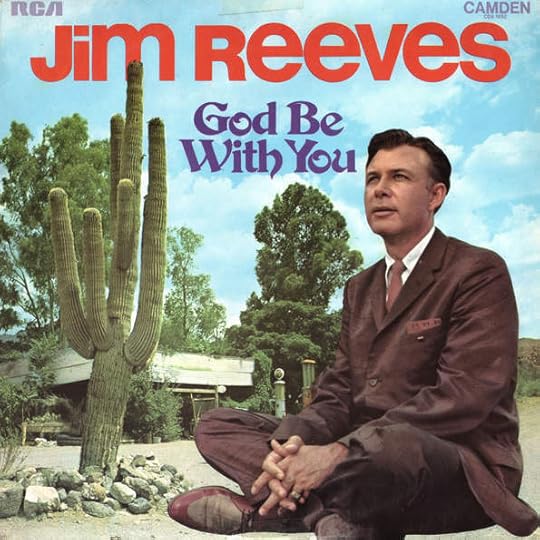Geoff Nicholson's Blog, page 5
February 22, 2024
THE SOLACE OF WALKING
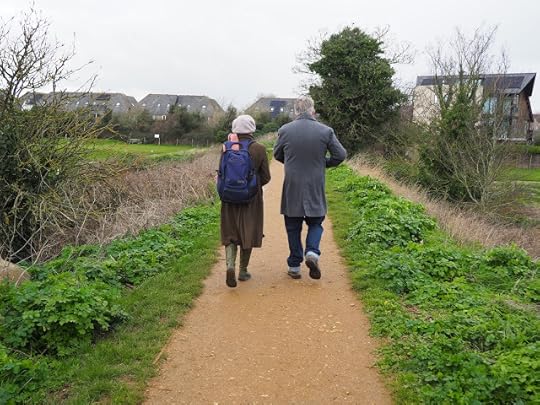
I was in Faversham last Saturday for the Literary Festival, being an author, and I was on stage with Sonia Overall, author of Heavy Time: A Psychogeographer’s Pilgrimage.
 Photo by Caroline Gannon
Photo by Caroline Gannon
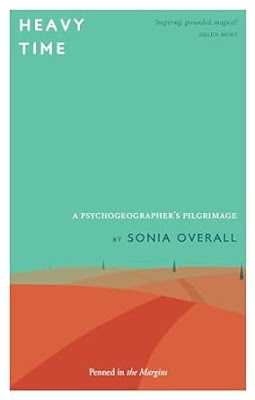
Among the many things we discussed and agreed on, was that a large part of walking and drifting is about noticing. You walk, you see things, you record them in some way, in memory or a notebook or a photograph. and later, somewhere along the line, they become something else – a book, an essay, even a blog post.
After the event, the inamorata and I stayed in Whitstable for a couple of nights with pals Jacqueline and Nick (thanks kids), and it seemed only natural that we should all go for a walk and a drift Sunday morning and do some noticing. So that’s what we did.
And what did we notice? Well I noticed this sign:
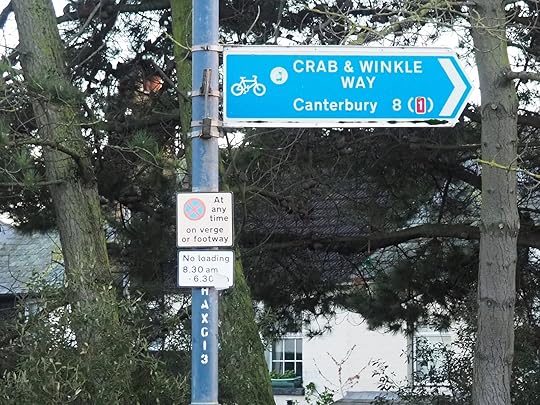
I’m not sure that we actually walked along the Crab and Winkle Way – we certainly didn’t get as far as Canterbury - but we may have covered some small section of it
And I can’t speak for anybody else but one of the things I noticed was the the intersection of what we might call nature with what we might call the built environment.
We saw gardens including this one decorated with a stone bearing the message ‘One Who Plants a Garden Plants Happiness.’
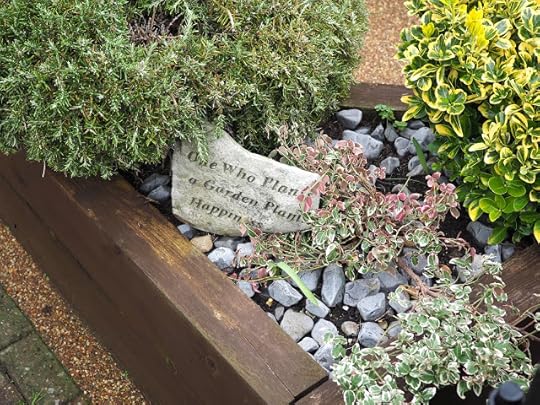
Now you could argue that one who plants a garden is just as likely to plant frustration, disappointment and thankless labour, but I don’t want to rain on anybody’s gardening parade.
There was nature creeping up the walls of houses:

We even saw a couple of Nicholsons:


We saw some interesting ruin:

And we saw this classic VW bus – every drift is better when it includes a VW bus:

There was also this very noticeable mural of Somerset Maugham:
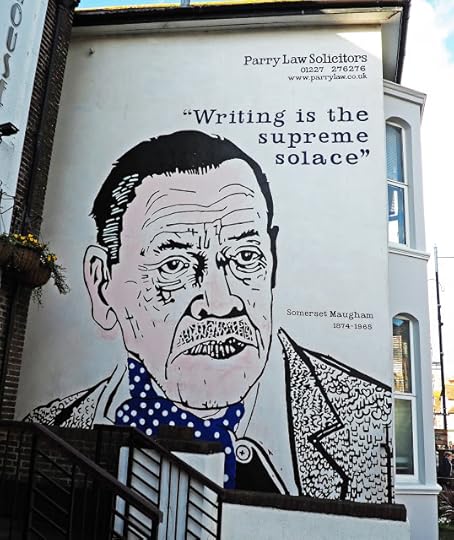
Now, I didn’t know that Somerset Maugham was a Whistable lad: he was born in the British Embassy in Paris. But after both his parents died he was sent to England to live with his uncle Henry MacDonald Maugham, vicar of Whitstable.
You know it’s a good while since I read any Somerset Maugham – I think the last book I read was Ashendenwhich I really enjoyed, so Maugham is definitely all right with me, but even so, from what I know of his life, I think perhaps he found some forms of solace even more supreme than writing.
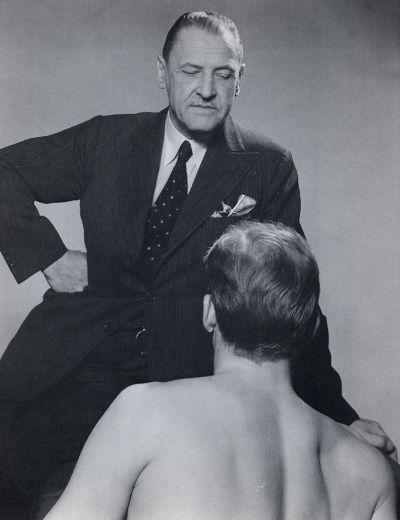
February 21, 2024
YAY - I GOT A NOT BAD REVIEW
Sands of an Hourglass: On Geoff Nicholson’s “Walking on Thin Air”
By Tom Zoellner February 6, 2024
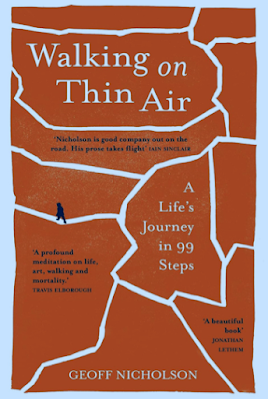
Walking on Thin Air: A Life’s Journey in 99 Steps by Geoff Nicholson
MEMOIRS ABOUT the walking life are, by definition, all over the map. But they tend to fall into one of two general categories.
There’s the directed hunt, in which the author has pointed themselves at a specific target: the end of a long trail, a shrine, a lost geography, a bit of treasure—books like Cheryl Strayed’s Wild: From Lost to Found on the Pacific Crest Trail (2012), Valeria Luiselli’s Sidewalks (2010), or any number of accounts of trekking the Santiago de Compostela.
Then there’s the musings of the ambler not going anywhere in particular but writing about the multiple joys of simply traveling around on foot, usually in cities, musing at the unfolding scenery—books like Alfred Kazin and David Finn’s Our New York (1989) or Thinking on My Feet: The Small Joy of Putting One Foot in Front of Another (2018).
Geoff Nicholson’s new book Walking on Thin Air: A Life’s Journey in 99 Steps is firmly in the second group, a well-established genre that lends itself to episodic structure and ample philosophizing. Nicholson’s unenviable twist, though, is that he’s walking on the sands of an hourglass. He has a diagnosis of a rare bone marrow cancer—“not rare enough, obviously.” But this writer from the industrial English Midlands has been walking all his life and intends to “continue as long as [he] can.”
Nicholson is a marvelously direct writer of indirect subjects who doesn’t have a lot of truck with pretense or a sense of misgiving about his subjects. He treads where he likes and doesn’t seem to care about commercialism when describing his enthusiasms. His 1996 novel, Footsucker, was an apologia for shoe fetishism wrapped in a murder mystery. And his further tributes to the parts of us that meet the ground include two previous works on the ambulatory life: Walking in Ruins (2013) and The Lost Art of Walking: The History, Science, Philosophy, and Literature of Pedestrianism (2008).
The artistry embedded in this basic act can be reduced to a simple apothegm. “I go to places,” writes Nicholson, a contributing editor of this publication. “I walk when I’m there, I look around, I write about what I see and feel. It’s not the only thing I do with my life, but it’s probably the best part.”
Turns out that Southern California is one of Nicholson’s prime turfs: “When people used to ask me why I’d moved to Los Angeles I always said, ‘Oh, I came for the walking.’ That was met with varying degrees of hilarity.” But he gets the last laugh. His favorite hiking desert is the Mojave, where the myriad dangers led him to embrace the traveler’s counsel of “creative cowardice” favored by Reyner Banham, another Englishman in California. It was also the place where an unnatural fatigue one hot day prompted him to make a doctor’s appointment, which led to his cancer discovery. (He did not blame the desert.)
Nicholson also crafts an ode to Franklin Avenue, “one of the less glamorous and less celebrated streets of Los Angeles” with none of the name recognition of its neighbors, and which locals think of primarily as a glorified on-ramp to the 101. Through some detective work, he locates the house where Joan Didion reported on the moral chaos of the 1960s and posed in front of a Corvette. It’s now a spiritual retreat called Shumei America Hollywood Center.
But this is a rare example of chasing an image, or its afterimage. Nicholson does not go for oft-trodden paths that project a certain civic or cultural iconography. What would be the point of that? “You can’t really walk in Raymond Chandler’s Los Angeles or on the banks of Thomas Cole’s Hudson River—though I’ve tried to do both—because essentially these places are inventions, artistic creations,” he writes. “They exist sure enough, but they exist on the page or on canvas and, of course, in the mind and imagination of the reader or viewer.”
As long walks can take meandering patterns, Nicholson bounces among subjects in numbered sections, not always connected. The reader quickly becomes aware that Nicholson is less concerned with subject than motion. As he puts it: “Admittedly I would in general prefer to walk in the Peak District than through the nearby industrial estate, but I’m not averse to walking through industrial estates, and true enlightenment might not even recognise the difference.”
In the days before GPS could be slid into a pants pocket, Nicholson often shunned the conspicuous and deliberate act of carrying a paper map, especially in London, where “a general sense of direction, a sense of how neighborhoods related to each other,” was often good enough.
Do the “neighborhoods” of this book relate to one another? Not always. Part of the appeal of discursive narratives sorted into number-headed chapters is the thematic puzzle of how things that shouldn’t fit into other things somehow do, or are made to, through the sleight of the writing. That assemblage isn’t always apparent here—the neighborhood is a jumble of architecture, and the promise of the subtitle, “a life’s journey,” resembles more of a stroll through a bric-a-brac emporium.
Then there’s the “thin air,” which provides the dominant key of the book. Nicholson keeps finding ways to drift away from seriously contemplating his cancer diagnosis. Perhaps, it could be credibly argued, this is a mimetic device. Such medical knowledge may indeed foster a constant desire to think about other things—to find alternative paths. Who can live their life for very long in constant dread? Come look at this discarded magazine on the sidewalk. And this colorful rock.
Herein lies a matter that some readers may consider a deficiency. Nicholson spends no time on the spiritual aspects of living and dying, not even to dismiss them. Does he think there’s a survival of the soul—a hidden path soon to become visible? We don’t get to know. The mysteries of dying are perfectly replicated by his authorial silence on this point.
Instead, when contemplating his own mortality, Nicholson turns to some of the imagery he likes best: “If a journey of a thousand miles begins with a single step, then every journey, of whatever length, must also end with a single step. I wonder exactly where and when that step will be in my own case. I can’t say I’m ready for it, but I think I’m as ready as I’ll ever be.”
Nicholson’s writing career has been varied, admirable, and courageous. He stops to notice uncommercial and even bizarre subjects, shunning well-traveled roads. He goes where he likes. He gets out often. Nobody can imitate him.
LARB CONTRIBUTOR
Tom Zoellner is an editor-at-large at LARB and a professor of English at Chapman University. He is the author of eight nonfiction books, including The Heartless Stone, Uranium, The National Road, Rim to River, and Island on Fire, which won the 2020 National Book Critics Circle Award for Nonfiction and was a finalist for the Bancroft Prize in history.
ROAMING WITH NICHOLSON
Well, why wouldn't you?
This is Stefan Van Norden

and this is a link to the podcast
https://noordenproductions.com/nature-revisited-blog/episode-115-geoff-nicholson-the-right-to-roamx
February 13, 2024
JUMPING JELLICOES

If you grew up in Sheffield, as I did, there’s a good chance that many of your formative walking experiences took place in the Peak District. I was going to say it’s ‘just down the road’ from Sheffield, but in fact parts of Sheffield are now actually in the Peak District.
Much of my own walking, often with my dad though sometimes with others, centred around Castleton which is at the head of the Hope Valley – undulating peaks and tors, some of them exhaustingly steep, and pierced by various caverns. There was a local expression, at least in our house, ‘We live in hope but we’ll die in Castleton.’
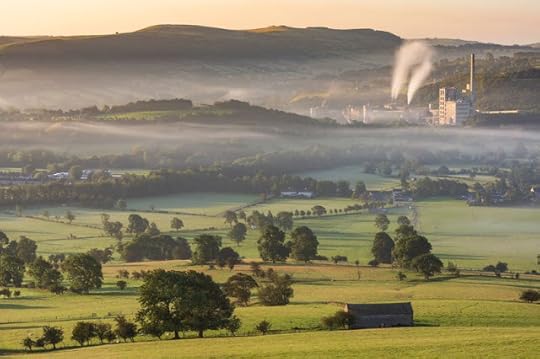 PHOTO BY JOHN FINNEY PHOTOGRAPHY
PHOTO BY JOHN FINNEY PHOTOGRAPHYAnd at some point as we looked across the Hope Valley we’d see a white industrial conglomeration in the distance. It’s what used to be called The Hope Valley Cement Works, now Breedon Hope Cement Works.
Most observers would think it’s a blot on the landscape, but looking back I can’t believe how unsurprising it seemed. Perhaps this was because wherever you walked in Sheffield you were bound to see industrial sites, mostly concerned with the steel and cutlery industries, so in one sense it was just more of the same. But I’m still surprised by how accepting everybody seemed to be. It was just part of the landscape. I understand there are now two public footpaths that go through the site but if they were there in my day, I certainly wasn’t aware of them.
Only recently did I decide to look into the history a little. The Hope Cement Works opened at 1929, and was extended in 1935-8, against some resistance, not enough to halt the plans but enough for the owners to bring in Geoffrey Jellicoe, architect, landscape architect, town planner and garden designer, and by many accounts one of the great garden theorists, to create some sympathetic landscaping, using waste products from the mining operation, to hide what were essentially two big quarries. This wasn’t until 1942 when – for Pete’s sake – there was a war on, but Jellicoe produced a plan of intent for future quarrying, which held up at least until the 1980s. Jellicoe was born in 1900 lived to be 95

Now, Geoffrey Jellicoe is some way from being an open book to me, though I knew the name, and a little further research revealed thatI’d done more walking in Jellicoe’s footsteps than I’d imagined. For instance, I now know that when I walked around the pedestrianized center of Gloucester I was treading the ‘Via Sacre,’ part of the Jellicoe’s redevelopment plan for the city centre.
I’ve been in Fitzroy Square in London which was pedestrianised in the 1970s, as part of a Jellicoe scheme. I know I’ve been tothe RHS garden at Wisley where Jellicoe designed the Canal Garden, though I can’t say I remember it. And I’ve always been an admirer of the Ben Nicholson (no relation) wall in the Jellicoe-designed garden at Sutton Place, but I’ve only ever seen pictures.
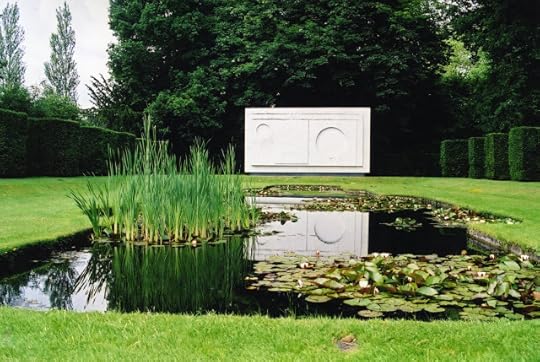
And then, while looking for something quite else on a map of London I spotted something called Jellicoe Gardens, north of Kings Cross and St Pancras stations.
Now, the Jellicoe Gardens weren’t designed by Jellicoe but by Tom Stuart-Smith Ltd who were, and I’ll quote, ‘commissioned by Argent to work with them and the Aga Khan Development Network to design a garden inspired by the early Persian garden traditions, where sunlight, shade and water are balanced to create a place of calm, comfort and quiet reflection.’ A visit seemed to be in order.
That bit of territory around Jellicoe Gardens is now all linked open squares and fresh out of the box architecture, and nearby is Lewis Cubitt Park which seemed a bleak and desolate place on the day of my visit, though you can just about see one or two people walking there.

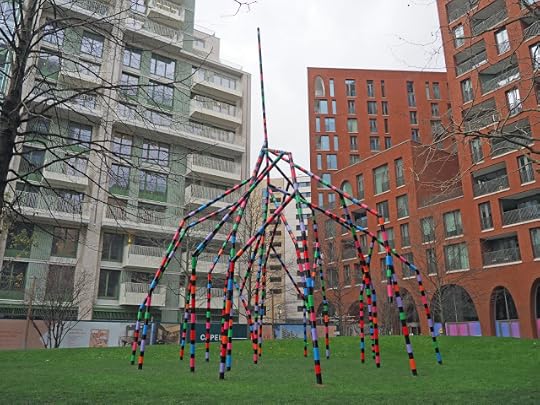
And as for Jellicoe Gardens themselves, they seemed to be, let’s say, minimalist. I saw exactly one person there, sitting on a bench looking forlorn.

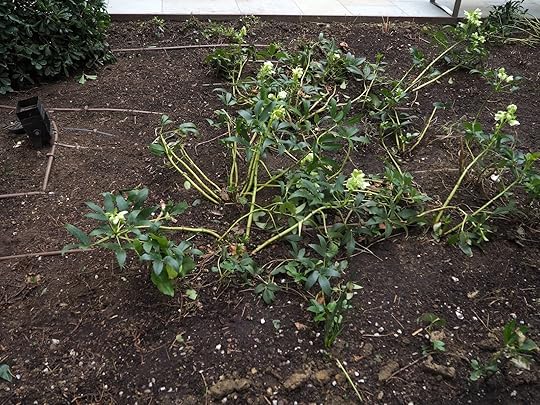
This may be only to say that my visit was in mid-February and not much was growing and thriving as yet, but the place undeniably has good bones. And I really did like the pergola, if that’s the right word, through which you see the zesty modern architecture all around it. A second visit will surely be called for.
To quote Tom Stuart-Smith Ltd again, ‘Inspiration has been taken primarily from the great garden Bagh-e Fin, a traditional Persian garden located in Kashan, Iran. It is on a much larger scale, but the plan is quite similar.’ I can’t say how many visitors to the Jellicoe Gardens know anything about Geoffrey Jellicoe or about Persian Gardens, though since they’re adjacent to the Aga Khan Centre perhaps they may be more familiar with the latter than the former.
On a final not-quite-Jellicoe note, and returning obliquely to thoughts of the Hope Valley, I’ve observed that cement works are curious beasts wherever they are. When I lived in Los Angeles, and I sometimes walked along La Brea Avenue and there amongst the rather fashionable shops and restaurants was another cement works – in its way even more surprising than the one in Hope Valley. This was the CEMEX Hollywood Concrete Plant, which had been in business for over 60 years. It was a magnificent monster of a place covering one and a half acres, although when I mentioned it to Angelenos, most of them had no idea what I was talking about.

In fact I gather there are now plans to build a huge apartment block on the site. I’m not sure whether or not that’s a pity.
February 1, 2024
SHANDY WALKING
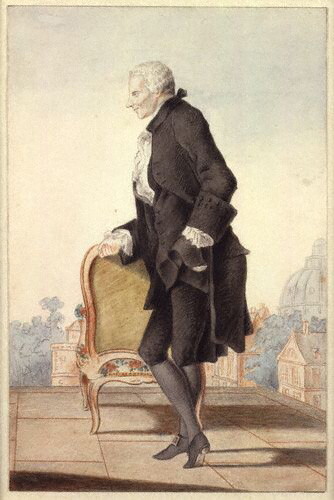
This is rather good, I think, from Laurence Sterne’s A Sentimental Journey (1768):
‘I was walking down that which leads from the Carousal to the Palais Royal, and observing a little boy in some distress at the side of the gutter which ran down the middle of it, I took hold of his hand and help’d him over. Upon turning up his face to look at him after, I perceived he was about forty.—Never mind, said I, some good body will do as much for me when I am ninety.’
Well, A Sentimental Journey is essentially a novel, so the narrator is not exactly the author, but crossing the road when he was 90 was not a problem Sterne ever had. He died some months after A Sentimental Journey was published, aged 54.

And then, there was a piece in The London Review of Books, by Thomas Keymer, about the difficulty of pinning down the meaning of satire, and about ‘getting the wrong end of the stick.’ He writes:‘The cleverest inheritor of the phenomenon was Laurence Sterne, whose Tristram Shandy (1759-67) intersperses its narrative with explicit rebukes to imagined readers … The work was there to be grasped or debated as the reader wished, and when one of them sent Sterne a walking stick as a gift, it was, Sterne replied, ‘in no sense more Shandaic than in that of its having more handles than one’.
I must say I’d never seen a walking stick with more than one handle, but I find they do exist, like this:

But that’s not the same as grasping the wrong end. In most cases, with most walking sticks, there’s surely only one end you’d really want to grasp.
January 29, 2024
THE DANGERS OF WALKING – ONE OF A VERY LONG SERIES
Here’s the kind of thing you don’t read every day. In fact I read it in the Evening Standard on January 12thand have been waiting to hear further developments, but as far as I can tell there haven’t been any.
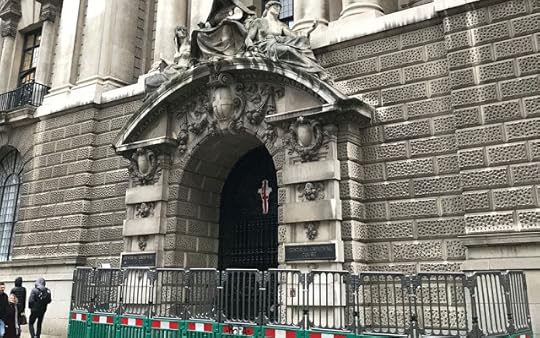
There in the paper, along with the above picture, was the headline ‘Crumbling Justice’ and the sub-headline ‘Pedestrian hurt after old Bailey Masonry Crashes into the Street Below.’
From this you and I would imagine a someone was walking down the street, and a lump of stone fell off the building from a great height and hit the walker below, But then you read the article (by Tristan Kirk, who I think also took the pictures), and it reads, ‘A member of the public was hospitalised after masonry over the “decaying” historic entrance to the Old Bailey crumbled and crashed into the street below.
‘No one was hurt when the stone fell from the building, but a pedestrian was injured after tumbling over debris on the pavement before the area had been cordoned off.’
Am I wrong to be disappointed by this? Walking along and being hit by an unidentified falling object has a lot of drama, maybe even cosmic drama, this kind of thing:
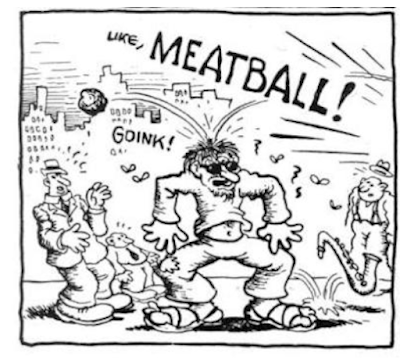
But tripping over a lump of stone that’s lying on the ground, really lacks grandeur. The fallen piece doesn’t even look to have been very big. The little white bit on the statue in the picture below is where it fell from.

Interestingly it seems to me, the pedestrian is not named in the news item. I wonder if the journalist was sparing his or her blushes. I don’t mean to mock this or any other pedestrian but falling over in the street and ending up in hospital is pretty hopeless and humiliating. I know because I’ve done it. And there wasn’t even a lump of masonry to trip over.
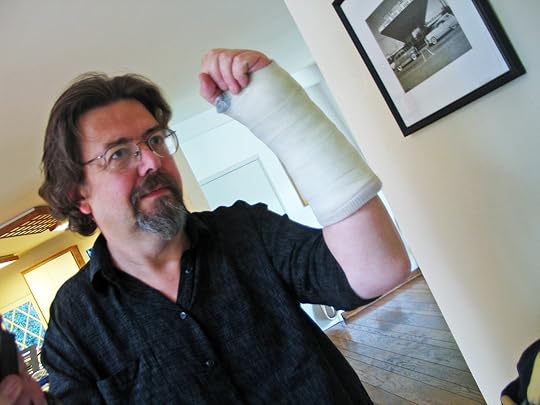
January 22, 2024
KEEP ON RUCKING? NO, NO JUST DON'T EVEN START.
You and I, of course, are familiar with Betteridge’s Law of Headlines which states, ‘Any headline that ends in a question mark can be answered by the word no.’ But not everybody is so familiar. And a little while ago in the Times there was this:

Rucking, it turns out (and maybe everybody in the world except me knew this already), consists of walking with a load of stuff in your rucksack. It can be metal plates, a few bricks or I suppose a couple of bottles of gin. According to the article, by Bridget Harrison, rucking is ‘being touted as the big fitness trend for 2024.’ Well, not in this house it isn't, young lady.
There are many, many ways of spoiling a walk and this seems very high on the list, though still better than golf, admittedly.
Here are some lads enjoying the benefits.

January 15, 2024
COME INTO THE GARDEN, JIM
Being a fan of walking, gardens and religious kitsch, and having a spare 50 pence in my pocket, I was able to buy a copy of the Jim Reeves album God Be With You from my local charity shop.
The walking element comes from a song on the first side, titled ‘In the Garden’ written in by Charles A Miles in 1912 or 1913 – sources differ. This is, or was, Charles.
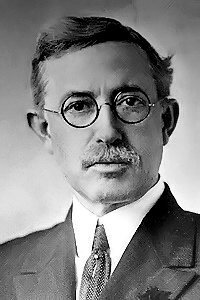
The first half of the chorus runs
And He walks with me, and He talks with me,
And He tells me I am His own;
which I suppose is fair enough if you like that kind of thing, but the second half of the chorus runs
And the joy we share as we tarry there,
None other has ever known.
None other? Really? Not ever? And it’s not just the singer’s joy, it’s god’s joy too. They're sharing a joy that nobody, god included, has ever experienced before in the long history of creation. I mean really? Anyway the final verse runs
I’d stay in the garden with Him,
Though the night around me be falling,
But He bids me go; through the voice of woe
His voice to me is calling.
So even god’s had enough of this walking and talking.
The song has also been sung by all manner of people including Elvis Presley, Johnny Cash, Meryl Streep in a duet with Garrison Keillor, and not least by Doris Day. Doris was my mother’s favourite and by some process she made me a fan too.
I can’t swear how much of walker Doris Day was (though she did have dogs), and her version of ‘In the Garden’ is on her album ‘You’ll Never Walk Alone.’
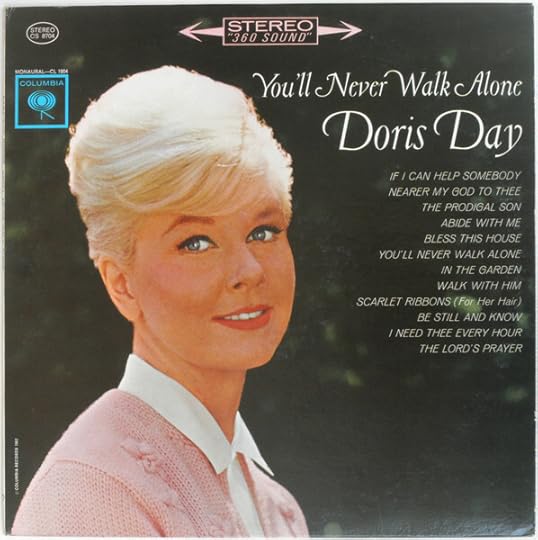
But she was definitely a gardener.
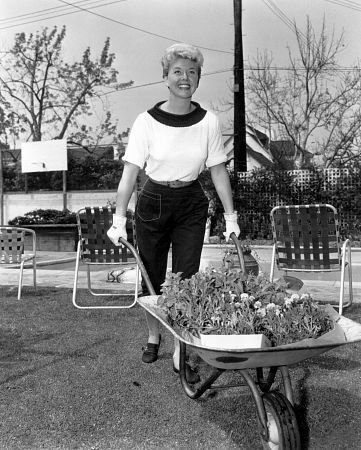
See how it all fits together?
But you know, I keep looking at that Jim Reeves album cover. Is he in a garden? It does look a bit like a garden, I love the giant saguaro cactus. But when I look more closely I think it could be a former gas station – there are a couple of antique gas pumps in the background. But maybe they’re being used as garden ornaments. Who knows?
However, more than that, whether it’s a garden or a disused gas station, Jim clearly isn’t there at all - he’s been cut out and collaged in to the album art. An earlier version of the album cover looks like this:
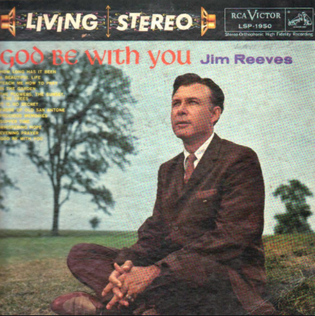
He’s still not in a garden, he actually seems to be sitting in a field. And I have no idea if he was a walker – I can’t find a picture of him walking - but he did sing a version of ‘Just Walking In the Rain.’ I suppose that’ll have to do.
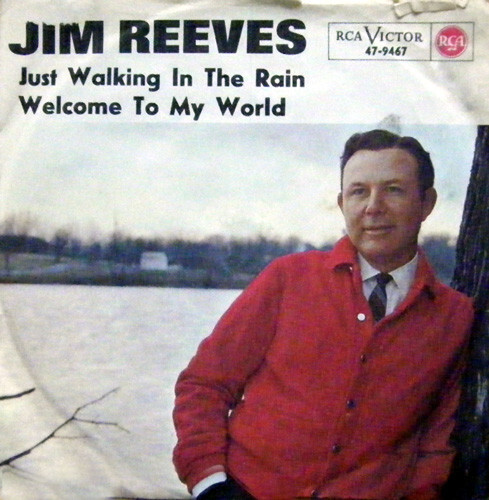
Incidentally, if you have a moment or two to waste, try typing ‘Does god have feet?’ into your search engine. You’ll be surprised how many people have asked that question. A debate rages. Believers are divided between those who think that since we’re in god’s image, and since we have feet and can walk on them, then god must have feet too. Others say that god is a spiritual being without form or body, and Biblical mentions of his hands, feet, eyes and so on are purely symbolic. I’m going for a walk while I think about that one.
January 7, 2024
SAME OLD TOPOGRAPHICS
Walking is crucial for a certain kind of photographer, and these tend to be the photographers I like, Vivian Maier, Garry Winogrand, Daido Moriyama, among many.

Moriyama has even published something, not quite a book, titled Random Walk, an empty album that comes with 62 black and white, and 38 colour Polaroids that can be put into the album in any order, thereby creating a ‘random walk’ through the streets where Moriyama took the photographs. Pretty cool huh?
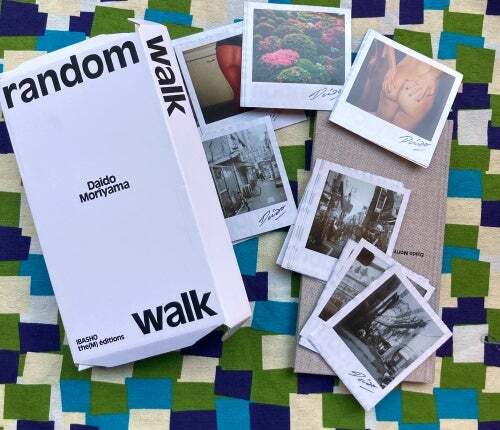
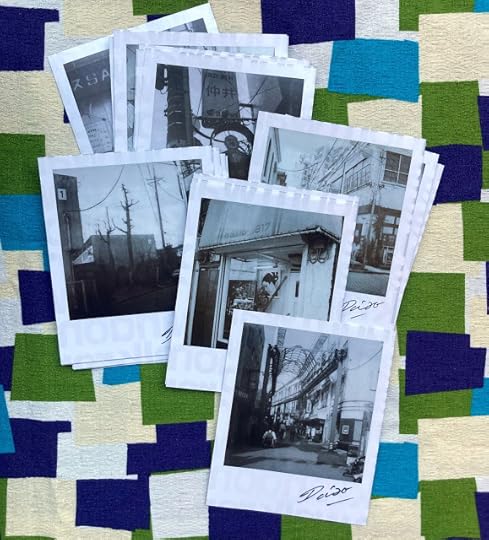
And I see there’s a new edition of Robert Adams’ book Summer Nights, first published in 1985 and now expanded and retitled Summer Nights, Walking.
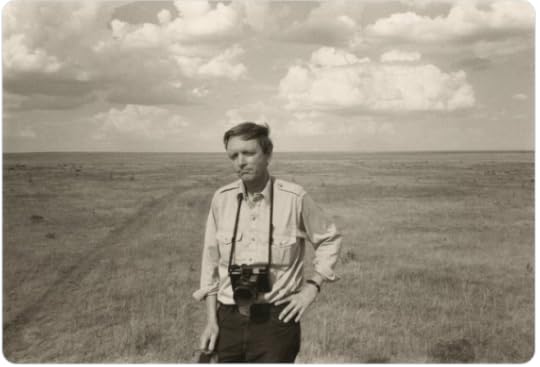

The publisher’s blurb says ‘In the mid-1970s, Robert Adams, began recording nocturnal scenes near his former home in Longmont, Colorado. Illuminated by moonlight and streetlamp, suburban houses, roads, sidewalks and fields seemed transfigured.’ I wonder what the neighbours thought about this man wandering around in the dark taking pictures.
I’m not trying to compare myself with Robert Frank or Daido Moriyama, or any other ‘proper’ photographer, but I do sometimes take pictures while walking in my own neighbourhood, and just once in a while it gets me into a small amount of bother. The most confrontational episode I ever had came one afternoon right after I’d taken the picture below.

Some youngish fellow came running out of his house demanding to know what I was up to.

Now, Bruce Gilden (above), a photographer I admire, and once interviewed, has or anyway had (he’s now 77 and may have slowed down a bit) a confrontational, in-your-face style as a street photographer. His reaction if anybody objected to being photographed was to shrug and say, ‘Got a problem with it? So call a cop.’ And if fists started flying, he was more than ready for that.
But I took a more conciliatory approach with my neighbour. I could have talked to him about New Topographics but I thought it was probably better not to. I said I’d recently moved into the neighbourhood, which was true, and that I was taking pictures to share with my friends, to show them where I was now living, which was slightly less true. I don’t think he was convinced. I can’t really believe he thought I was doing a reccie for a gang of burglars but it did seem that way, but in any case I shrugged and went on my way and we didn’t come to blows.
I can only imagine how more worse the altercation would have been if I’d been walking around taking pictures at night.
January 4, 2024
FRIENDLY NEW YEAR WALKING

Some good walking news to start the year, and especially good news for Santiago Sánchez, the Spanish football fan who was "detained' in Iran while walking from Madrid to Qatar for the 2022 men’s World Cup, and held in Tehran after visiting the grave of Mahsa Amini, the young Iranian woman who died in custody after being arrested by morality police, for wearing her hijab "improperly."
The Iranian embassy in Spain said that Sánchez's release came thanks to the two countries' "friendly and historical relations."
So that’s all right then.
Geoff Nicholson's Blog
- Geoff Nicholson's profile
- 55 followers



